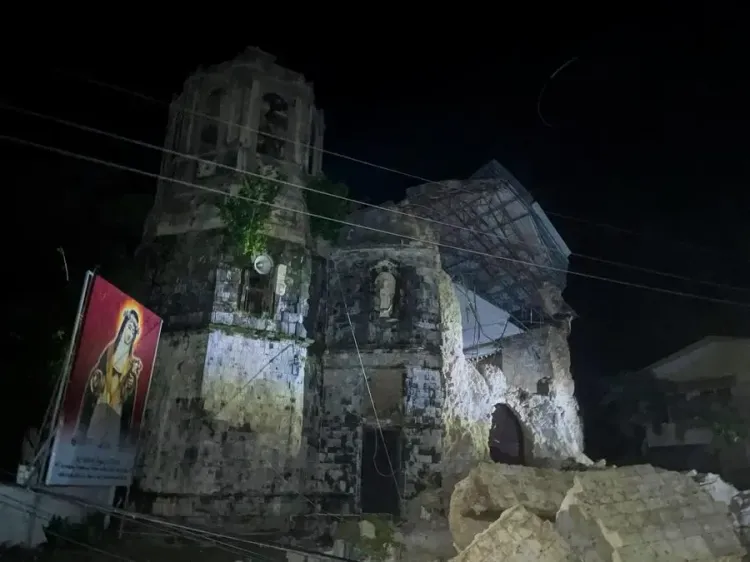Could the Death Toll in the Philippines Earthquake Reach 60?

Synopsis
Key Takeaways
- Death toll may reach 60 due to the earthquake.
- Initial reports confirmed 26 fatalities and over 147 injuries.
- The government declared a state of calamity for rapid relief efforts.
- Rescue operations continue as authorities verify missing individuals.
- The quake struck at a depth of 5 km, northeast of Bogo City.
Manila, Oct 1 (NationPress) The death toll from the recent 6.9-magnitude earthquake that hit Cebu province in the central Philippines may escalate to 60, as reported by the Philippines' Office of Civil Defence (OCD) on Wednesday.
According to Assistant Secretary Bernardo Rafaelito Alejandro, the deputy administrator for the OCD, there are indications that "up to 60 individuals have lost their lives due to this earthquake," though this figure is pending validation.
Initially, the National Disaster Risk Reduction and Management Council reported 26 fatalities and over 147 injuries resulting from the quake.
Alejandro mentioned that the OCD is still in the process of confirming the identities of those missing, with ongoing reports of individuals trapped under rubble.
The provincial disaster management office of Cebu has documented over 60 fatalities from the quake, with at least 30 deaths occurring in the city of Bogo, the earthquake's epicenter, 22 in San Remigio, 10 in Medellin, and one in Tabuelan.
In response to the disaster, Cebu has declared a state of calamity, allowing local government units to swiftly access emergency funds for relief and rehabilitation, alongside implementing price controls on essential goods to safeguard affected citizens, as per Xinhua news agency.
The Philippine Institute of Volcanology and Seismology initially reported a 6.7-magnitude quake in Cebu at 9:59 p.m. local time on Tuesday, later adjusting the magnitude to 6.9, with the earthquake occurring at a depth of 5 km, approximately 19 km northeast of Bogo City.
This tremor was felt across several neighboring provinces in central Philippines, as well as in some regions of southern Philippines.
Situated along the Pacific "Ring of Fire", the Philippines is inherently susceptible to earthquakes and volcanic eruptions.









